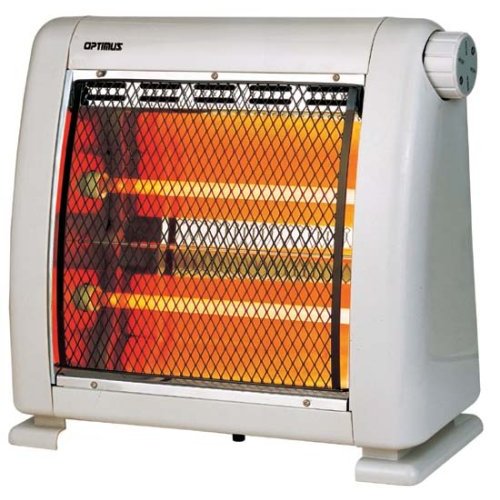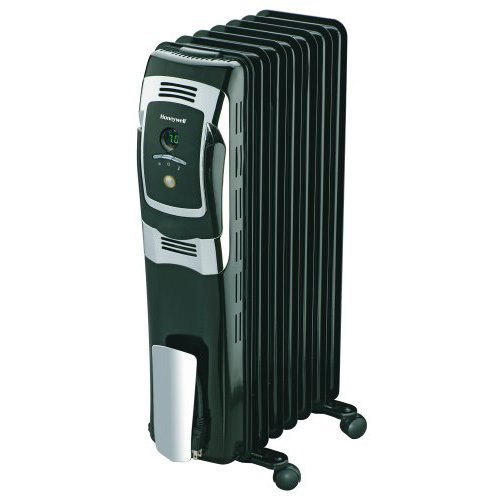Call the Chamber of Commerce, the Convention and Visitor’s Bureau and the resort marketing folks along Florida’s Gulf coast. I have just guaranteed that our weather for the rest of the winter will be beautiful, sunny and warm.
That’s because I just bought a shop heater.
Yes, here in Florida.
So far, this December here in the Tampa Bay area is running as one of the ten coldest since records started being kept in 1890. Sure, just like this past January and February, we’re not talking frigid with ice, but the shop is just too cold to work in comfortably. And, if I’m not comfortable, there’s less of a likelihood that I’m going out to the shop to do any work, and when I do, my mind is focused on staying warm rather than ensuring I am using proper safety procedures.
As I had mentioned in an article I wrote this past January, there are several different kinds of heaters out there to choose from. Knowing I just needed a heater to chase the chill for a few months, I opted for something from the portable electric space heater category.
On my first attempt to buy one (when a cold snap hit the area earlier this month which took our daytime temperatures only into the 50s and overnight temperatures below freezing), every single portable heater had been purchased from the shelves of the local Home Depot, Wal Mart, Target, Lowe’s, K-Mart and other mega retail locations. I guess I was a little late to the party…
Knowing it would be tough to find a heater locally, I dropped back to my alternate plan – Amazon.com. Internet shopping is the greatest thing since sliced bread. Since Jiffy Pop. Since Slim Whitman. From the comfort of my living room, I was able to search the offerings online and make a purchase.
Breaking from my decision last January, I opted for a quartz radiant heater. My thought was that if I could get a focused beam of heat on me at the bench, it would heat me up faster than waiting for the whole shop to warm up. I bought a portable floor model and waited – through the coldest days this season – for it to arrive. And, when it did, it looked cool. It had all the safety fixtures, I could pop it up on my front work cabinet and point it at me at the bench. So far, so good….
Well, I didn’t get the right model. The radiant heat feature was great in the cool shop – when I was standing right on top of it with my hands less than one foot from the glowing elements. Beyond that… well… there was little relief. The model I bought also had a great safety feature built in – every five minutes, regardless of what the ambient temperature was, the safety heat overload switch would cut the unit off. There was only one way to get it to restart – that was to unplug it, wait ten minutes, then plug it in and start it up again. Since it only shot its heat into the shop to warm whatever it fell on, once it went off, the shop just got cold and miserable. It went back into the box and I started the return process on Amazon – which is incredibly convenient.
This past weekend, with the skies gray and spitting drizzle and a high temperature in the mid 50s, I started my search again. I was willing to try one more time at the local retailers, looking for the model I had originally decided on – an oil-filled electric radiator model.
No at Home Depot. No at Lowe’s. None at K-Mart. None at WalMart. Then, in Target, I saw it. One of the last three portable heaters on the shelf. It’s a Honeywell oil-filled radiator model portable space heater. I hustled it into my cart and didn’t take my eyes off it for fear that someone might snatch it from the cart. A cool $60 later, I had the unit in my car, headed back to the shop.
Set up was very easy, involving attaching the unit’s casters so it could be wheeled around and kept off the floor. The control panel is pretty sweet. First and foremost, it had all of the safety features you would want – a tip-over sensor, a thermal overload and a boatload of warning stickers. It has a timer, so I can set how long I want the heater to stay on, a thermostat so I can set a comfortable temperature and a heater ‘force’ setting – full blast or economy mode. I plugged it in and set the temperature to 68 degrees. Why not?
One thing about a heater like this – it does take some time to warm up. The heating element is encased in the radiator body, and it has to warm the mass of the oil inside and the metal of the unit before it can start pumping the heat out. I held my hand over the heater and wondered why it was taking so long.
I started working anyway, figuring I would check the unit in a little bit. I got involved in cutting a breadboard edge for a table I’m working on and let myself get into the woodworking.
Within half an hour, I found myself pushing my sleeves up and thinking, “Man, this must be hard work. I’m nearly breaking a sweat.” That’s when I remembered to check the unit. It was working beautifully! It was hot to the touch, but not enough to burn you. The heat it threw was awesome… it was a gentle heat that filled the space. I was warm by the bench, at the table saw. Everywhere. I also felt a lot more comfortable with the heating elements not being exposed in my dust generating shop. I clicked the heater back to the energy saving mode and spent the rest of the afternoon out there, comfortable and enjoying my shop time as I watched the gentle cold rain fall through my shop window.
Am I some kind of wimpy Florida guy now? Sure. You bet. But, if this heater makes my shop time – my hobby – more enjoyable, well, that was a sound investment of my money and a very welcome addition to my shop.





Great purchase, Tom! I think you will like the model you bought.
Merry Christmas, and my best wishes for a wonderful 2011!
Al
It’s been a very ‘cool’ heater for sure! 🙂
Now, I just have to survive the ribbing by the folks who work in the cold up north!
Merry Christmas to you as well, Al.
I have an older version of this heater. It does work well, but when I got the electircity bill after using it for a month, Whoa Boy! I would not set it and forget it. It was sucking up electricity. I even checked my electric meter, and timed the rotations on it. Then I turned off the unit, and the rotations on the whole house dropped considerably. When I would use it I would only use it while I was in the shop, even with the thermostat on the unit set. Maybe your newer unit is more efficient, or maybe my workshop is just dang cold, but keep your eye on it.
Also, I find once the unit gets up to temperature, putting a small fan to blow over the heater helps to more evenly distribute the warmth.
Stay warm (what I wouldn’t give for temps in the mid 50s. geesh!)
Jonathan
===========================
It does have an ‘energy saver’ setting once it gets to temp… but yeah, I’m not cranking this baby up to 90 to simulate summer…
Alright, I get it… Florida’s not THAT cold… but for us thin-blooded Floridians… 🙂
All those safety stickers are there to keep the heater warm. 🙂
I have an electric heater with a fan and thermostat, it is plugged in and on 68 degrees 24-7.
Yes it does suck up the electricity but, in Kansas you get used to that. It is now 10:00 AM and the outside temp is 28 degrees and it is 69 in my shop.
Rog
Tom, If you plan on staying where you are, look into a ductless heatpump. It will heat on those rare winters you need some, but more importantly, it will cool and dehumdify your shop in the shoulder and summer months. Here the beauty of it, if you think you’ll ever move into a larger shop, size it for that space. The new models have inverter driven compressors which allow a greater efficiency. If it is oversized, it will more quickly reach temperature and the compressor will ramp down and start pulling the minimum amp draw it takes to keep you at that temp. I would guess you’d be looking at approximately $3,000.00 for what you’d need. But, like you said, your comfort in the shop that you love is worth it!!
Looks like a great heater, Tom. I am always looking for a better way to heat my garage. I would be interested to know from someone who actually lives in a cold climate, such as Michigan, how well this heater works. Did you notice the subtle ribbing there? 🙂
Gotcha 😉
I have an unheated shop too and I have a small space heater I use from time to time. I would be interested to know if saw dust impacts it’s operation.
Gonna keep an eye on it for that. I do feel more comfortable with it not having exposed heating elements… Easier to clean and less likely to burn on the elements…
I too bought a heater this week. While technically living in the South, Southern Oklahoma has been pretty icy lately (hasn’t been above freezing for 3 days), so I got a 125,000 BTU diesel power heater. You know the ones – they look (and SOUND!) like a jet engine. My shop is 30 x 40, so decent sized, but also no insulation, and plenty of, well, let’s just say, there’s ‘adequate ventilation’. This large-ish heater won’t get the shop hot, but certainly warms it up.
Like you say, though – being able to take off my thick Carhart coat and work comfortably makes a huge difference. I can’t plug my phone into the stereo and listen to music, but I can get things done.